Robbie Danger on cycling around the world
Kiwi bikepacking enthusiast Robbie is pitting to become the first transgender person to cycle around the world. How's it going?
Kiwi Robbie Danger is cycling around the whole world. In doing so, they hope to become the world’s first transgender person to complete such an epic adventure and claim the Guinness World Record, too.
Cycle touring and bikepacking is both awe-inspiring and labour-heavy. There’s a buzz with staying in a new place every day, answering only to the freedom of the route and getting to taste the air from every single location your face breezes through. And then there is packing. And admin. And keeping yourself safe. It never ends, until it all ends. And then it’s all just over and you wonder what you’re going to do next.
There’s something big about saying you’re cycling around the world. It’s not a walk in the park, neither is it a trip round the coast of a single nation. This is The World. How do you even begin to attack something like that?
I wanted answers. I love an adventure yarn and hearing about someone’s epic journey; how they enjoyed a particular place or escaped some random pitfall. I messaged Robbie and asked for a Q&A. Below is the result of that interaction.
What does ‘a real day in the life of Robbie’ look like on this quest?
Wake up. Strongly desire to go back to sleep. Make coffee and pasta for breakfast. Pedal for 10-12 hours. Eat continuously. Get a witness signature for my record book. Take photos and videos. Try to keep on top of planning the next few days and reaching out to people I can stay with. Spend all day figuring out where to sleep. Pitch tent or stay with a friend or sleep in cheap motel. Try to do more phone admin. Pass out with phone on face. Repeat.
Have you met others attempting similar quests?
I met three in North America, and a lot more people in Europe. I came across Simon and Laura (instagram/weridebikesplaces) in BC, I’d been hearing from locals over a few days that there were other world cyclists ahead of me, and I thought I’d never catch them but one day they were just there lounging in front of a hut on a trail. They’ve been on the road for over two years and chase the seasons. And I met Steve Hunter (Gram @freddi_woomba) who had hiked and traveled around the world for over 10 years, on his first bike tour in Ontario. He’s written a book on his adventures called “Relish In The Tread”.
In Europe, I met eight people who are cycling east around the world. Most people are travellers first and cyclists as a means to an end, while I’m more *into* riding - doing much bigger distances and longer days. There’s a bunch of us who do that, but we’re in the minority.
Where do you stay each night?
I try to camp when I can because it’s good for the budget (whether it’s wild camping or a campsite depends on the country). Then cheap motels a couple nights a week, and warmshowers hosts or friends (old friends, new friends from Instagram, friends of friends, and once, friends I made on the side of the road) whenever I can.
Whether or not I end up in the city or countryside at the end of the day dictates what I choose usually. I never camp in cities. Villages sometimes if I turn up really late. In a lot of countries wild camping is illegal, because people behaved badly and ruined it for everyone else, so if wild camping it’s really important to be a good ambassador for the sport and not get caught!
Now it’s winter, I’m using guesthouses and Airbnbs a lot more. It’s -5c today in Tbilisi. Thankfully Türkiye and Georgia have been very affordable so it hasn’t been a problem here - not like in Western Europe where I had to camp because I’m not spending $200 on a hotel!
What has travelling the world been like, as a transgender person?
Travelling as a transgender person can be tough. You have to carry a lot of medication across borders, and some countries I’ve visited are hostile towards trans people. Transphobia is at an all time high in the United States, and here in Georgia there was a new anti-LGBTQI+ law that came into effect on December 2nd which bans transgender healthcare for Georgians, displaying pride flags or promoting LGBTQI content, among other things.
A lot of travellers will say “world travel is easy! Everywhere is safe!” And often locals are very generous, kind and lovely. But politically the world is still headed in a more conservative direction, and we need people who have privilege to keep advocating against populist conservative policies and, well, stopping their racist uncles. We’re watching the world close off to us more and more every year.
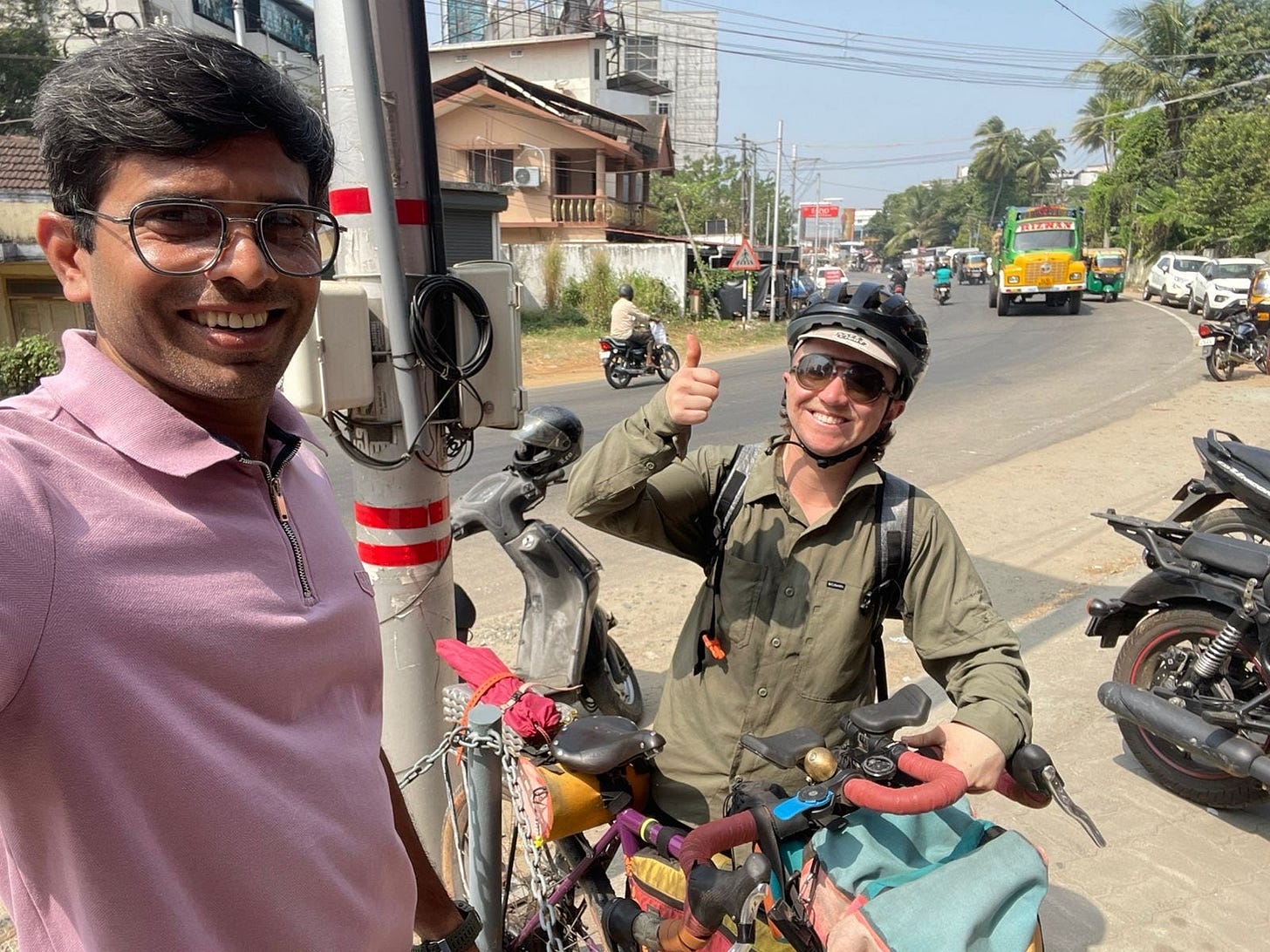
What’s the reality when it comes to getting through some of the world’s more dangerous corners?
Guinness says you can fly over “impassable barriers” provided you cycle the required 29,000km. Active war zones and places that have severe punishment for LGBTI+ people aren’t required of me. Most people are nice, BUT I try not to take my chances, whether it’s with people or nature. I’ve abandoned one camping plan because of creepy local graffiti and another to outrun a thunderstorm.
For countries where accomodation isn’t cheap, you can usually safely pedal further at night on some low traffic roads until you’ve made a gap between you and the problem. Also, to most people I look dirty and don’t have anything of value, this can be a blessing and a curse because you won’t get robbed but some more well-to-do people also won’t help you lol. To some people, you present as a homeless person and receive the same run-of-the-mill NIMBY bigotry that unhoused people can’t escape. You should also definitely make good use of Google to know about any dangerous plants or animals in each place.
Oh yeah, and borders and corruption and stuff. Google that too. I guess my answer is that any time I’m not pedalling, I’m probably searching something. Recent searches include “photos of termites”, “border of the European Union”, “bic lighter wheel stuck”, and “can you use regular soap in a washing machine?”.
Had any disasters?
Most of the time it’s never a true disaster anymore, because I try to take measures to mitigate these things; like having a bike made of parts that fail gracefully, with plenty of warning. Even when I got hit by the car (Iowa City, USA) and sent to hospital, I was already making plans and figuring out what to do before they even discharged me.
On this trip, things haven’t necessarily gone awry, but I have been offered a place to stay multiple times while loitering somewhere rural looking at my phone trying to decide where to camp. Each time has been incredibly nice! I also got put up by Audrey, the director of the Bike Library, who let me use their tools and space to fix my bike after the big crash. The Bike Library is a huge community bike hub and really, truly community orientated.
How do you plan a route? I imagine there are lots of ways round the world by bike?
I used Komoot! It displays major touring routes like the ACA and EuroVelo, and recommends routes based on safe cycling infrastructure and popularity. It’s not perfect, sometimes I end up on a dodgy road, but it’s pretty good. When it isn’t, I contribute to Komoot in hopes that future cycle tourers will get better routes than I did. Istanbul in particular was very hairy.
Aside from that, it’s about trying to hit the right seasons (summer in cold places, winter in hot places). I arrived in Tbilisi with no days left to spare - the day I got here it snowed on me as I came down the mountain, and the next day it was -5c.
Can we see your route on a map somewhere? Or what you’ve completed?
Check out what I’ve completed so far in my Komoot collection - here!
What is one thing you want everyone to know about a feat like this?
Over the last few years, I’ve watched bikepacking move into mainstream cycling consciousness and, just like gravel cycling, people are coming from pro cycling teams with big marketing budgets. It seems like it’s becoming a way to extend your professional cycling career for a few more years. Unfortunately, this is attracting even more of their fans: many are wealthy, white desk boys, who don’t understand how to respect the land and the local communities that support the sport of bikepacking.
Every year we see local people complaining about bikepackers staying on their land without permission, not turning up to the accommodation they’ve booked, or otherwise being rude and entitled. This is why I have “Decolonise bikepacking” written on my Strava. If we want to continue enjoying this sport, we should fight back against capitalism taking over bikepacking, whether that’s through helping bring more diverse voices to the sport, or teaching people how to be outdoors responsibly.
What’s your dream cycle tour?
At the moment I’m dreaming of taking the ‘coconut milk run’, with small bicycles. The milk run is a famous sailing route that follows the trade winds from the Americas through the Pacific Islands to Aotearoa. Imagine bikepacking all the Islands and sailing in between them. So dreamy.
My other dream is to eventually go around the world again with another person, see all the friends and do more tourist stuff that I can’t do on the world record. I already have a very silly tandem, so I like to imagine it’ll be one of those Cinderella “when the shoe fits” moments. It’s a beauty, custom made 20-inch wheel travel tandem that breaks down into two suitcases. I have to pick it up from Melbourne after my record.
Where is the finish? And when do you expect you’ll finish?
I’ll finish in April 2025 at the entrance of Auckland international airport. It’s not the most glamorous location for sure, but it was the most convenient way to design the route!
How do we keep up with you and follow along in the meantime?
You’ll mostly find me on my Instagram: @dirtdroprobbie
Robbie’s ride is raising money for Outline Aotearoa - providing rainbow mental health support services. You can find out more and donate here.
And you can read and subscribe to Robbie’s Substack here:


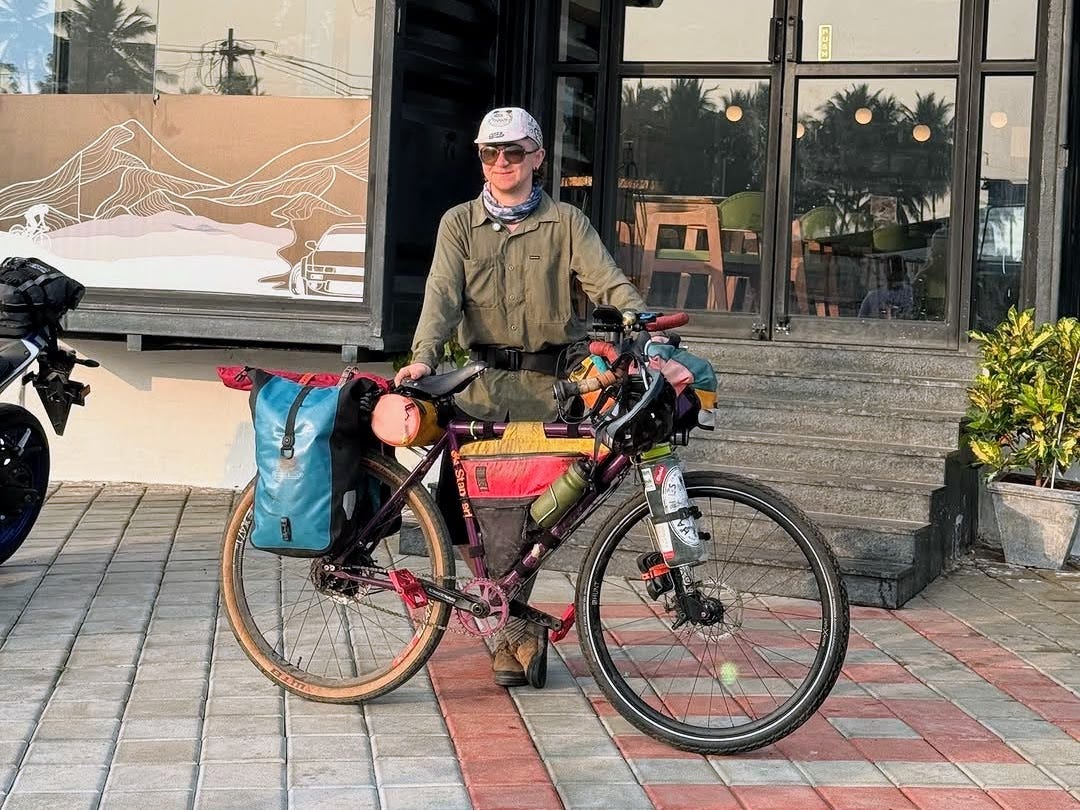
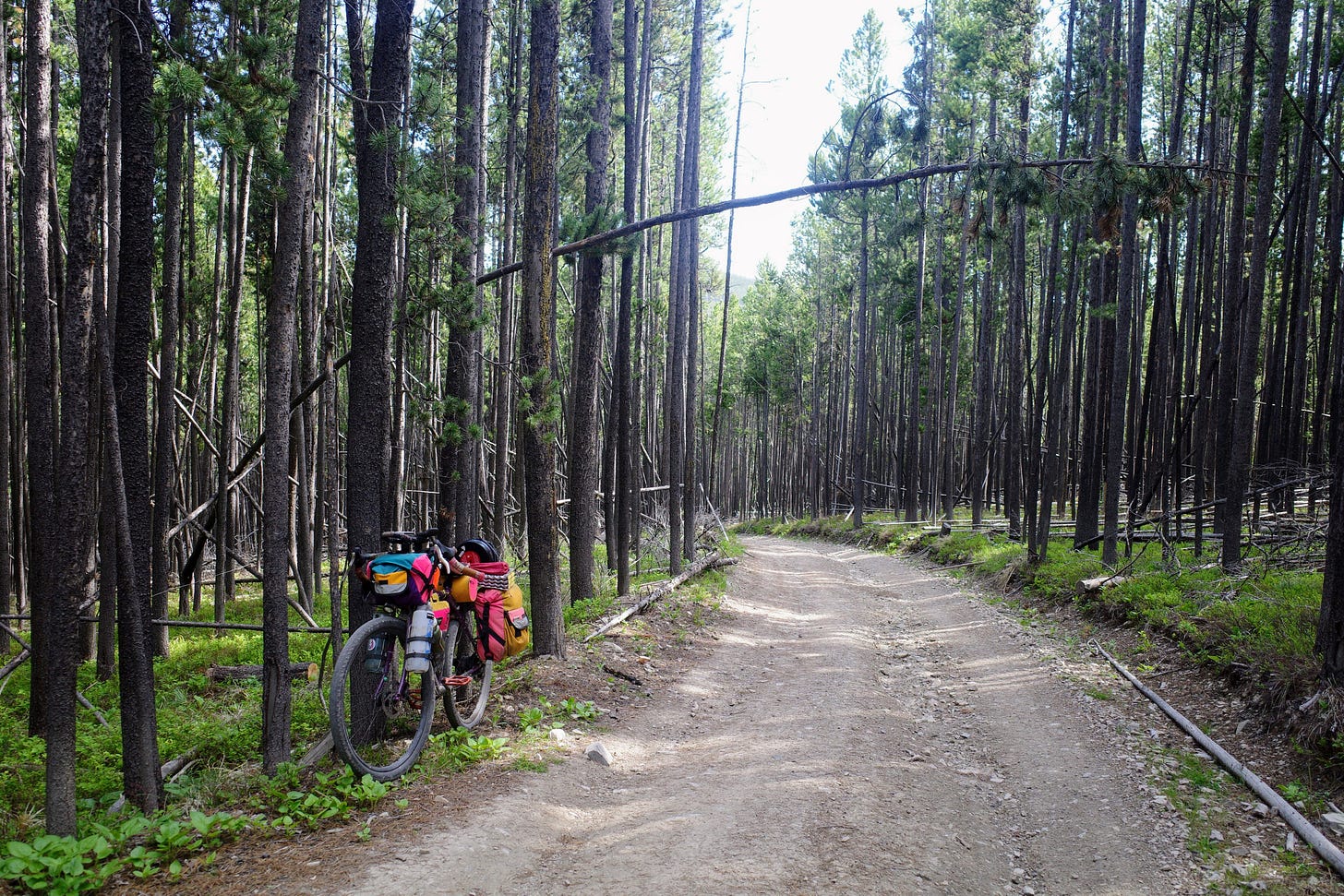
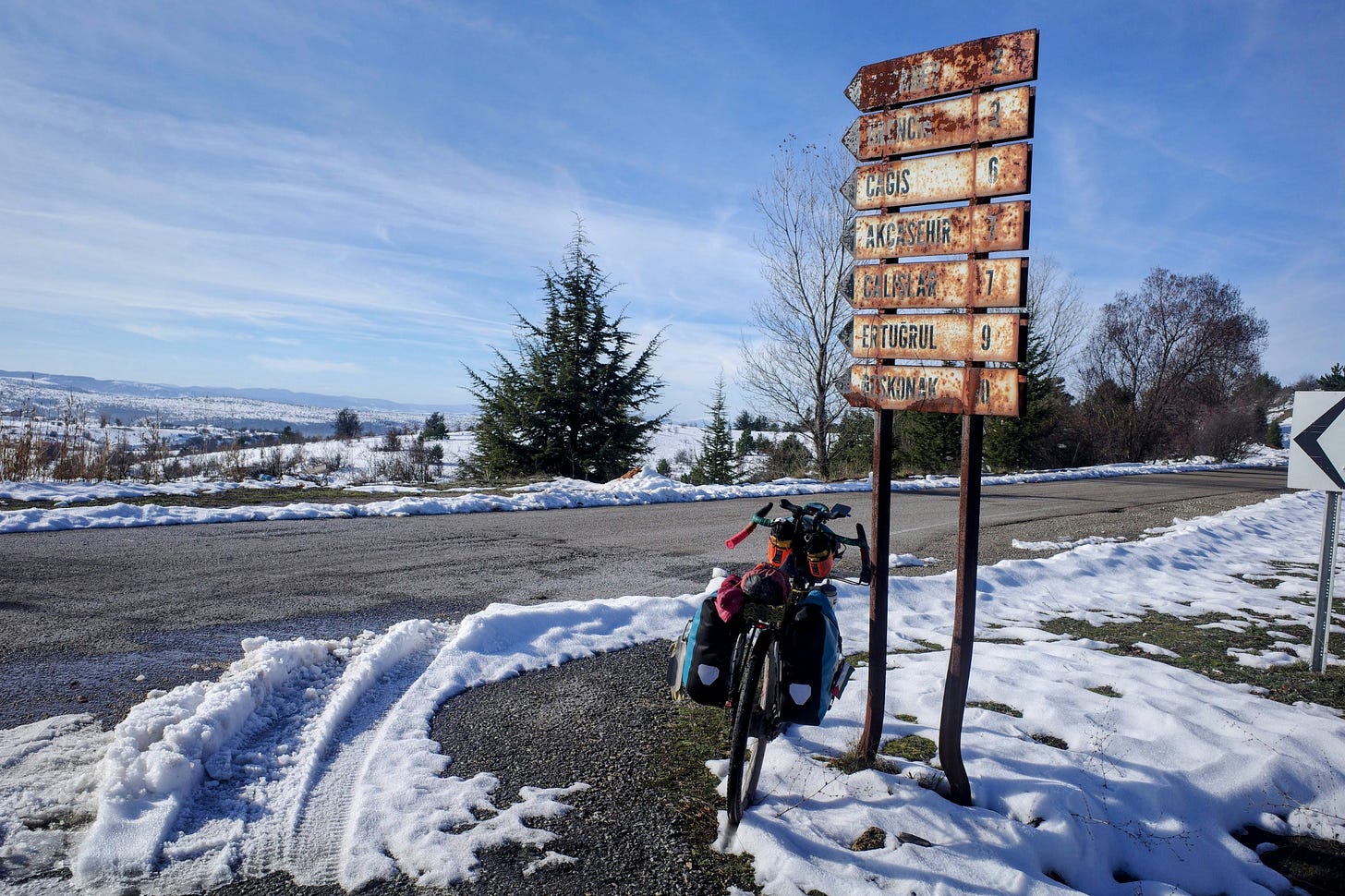
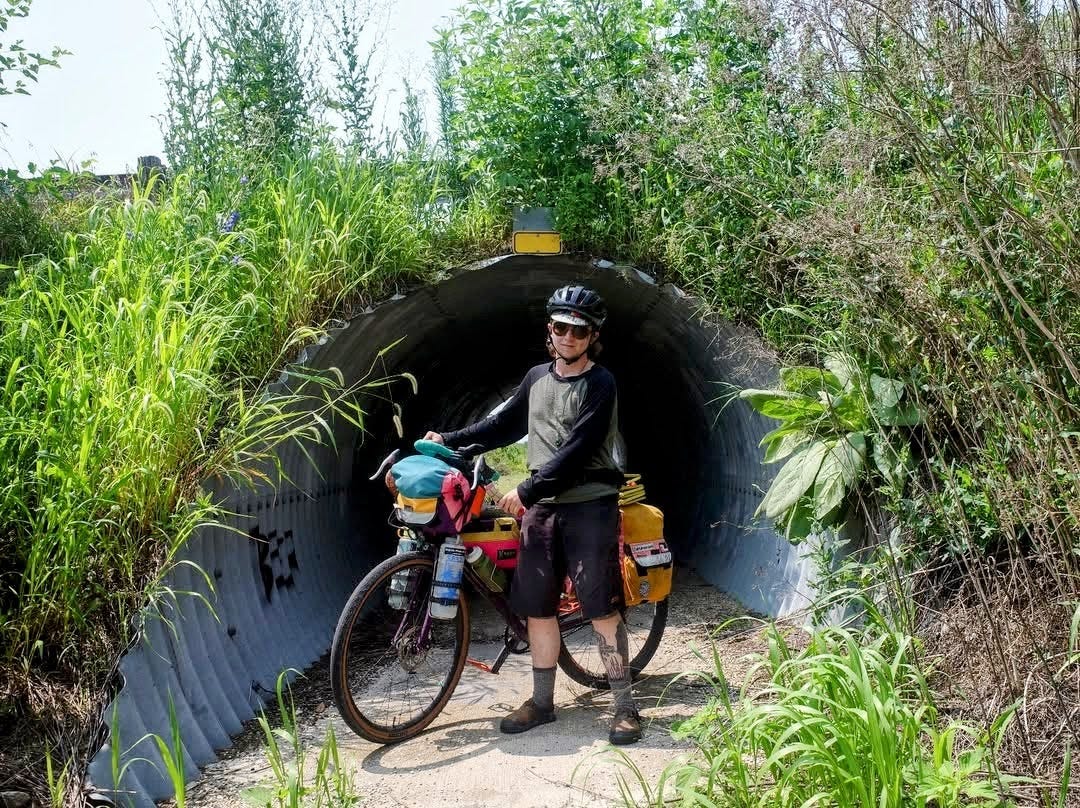
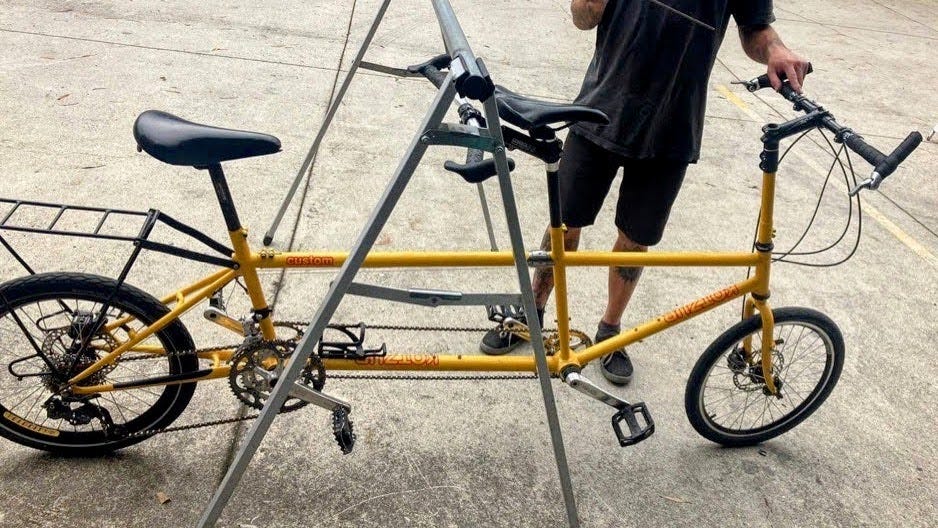

amazing!